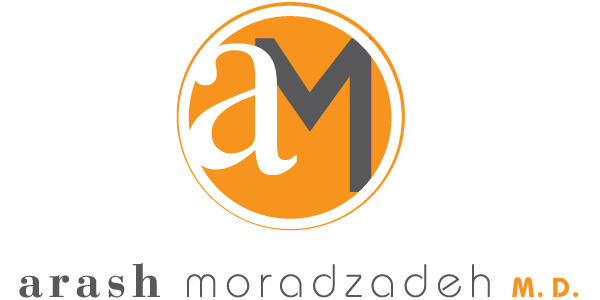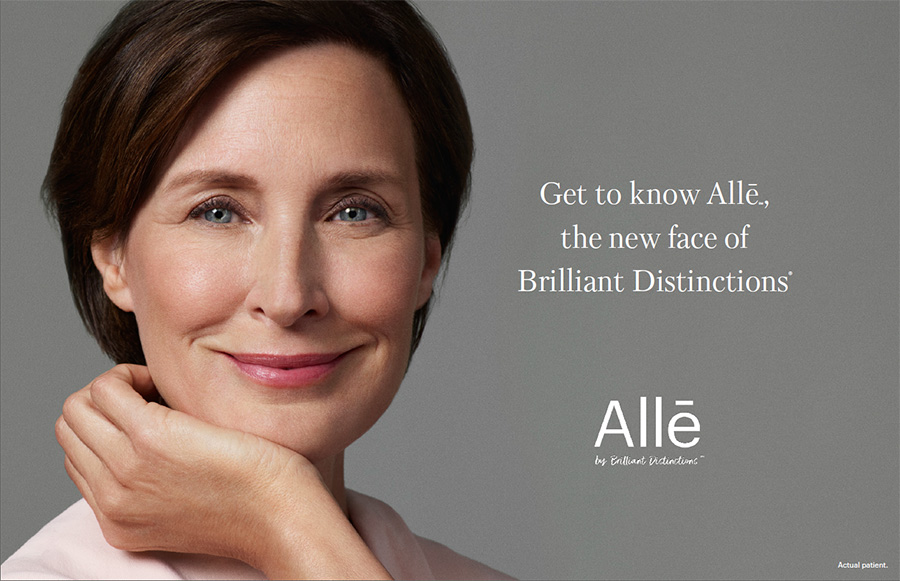Serving Beverly Hills, Los Angeles, Santa Barbara and surrounding areas
Otoplasty refers to cosmetic surgery procedures for correcting deformities or disfiguring injuries to the outer ear. This is the only type of plastic surgery that’s done more often on children than adults, but it can be performed on people of all ages.
Prominent or protruding ears commonly run in families — there is definitely an inherited tendency for this condition, although it cannot be predicted for certain whether or not a child will be born with it.
There are many reasons to consider undergoing otoplasty surgery:
- To correct the appearance of protruding or prominent ears. This procedure is known as setback or pinback otoplasty.
- To correct major disparities in the size or shape of the ears.
- To repair or reconstruct the auricle after traumatic injuries or cancer surgery.
Otoplasty is not done to correct hearing difficulties related to the structure of the middle and inner ear.
Understanding The Surgery
Otoplasty in children is performed under general anesthesia. In adults, it may be done under either general anesthesia or local anesthesia with or without sedation. Most otoplasties take about two hours to complete. Many plastic surgeons prefer to use absorbable sutures when performing an otoplasty to minimize the risk of disturbing the shape of the ear by removing stitches later. The exact technique used depends on the changes you are trying to make. Dr. Moradzadeh will customize your otoplasty to meet your specific needs.
Setback/Pinback Otoplasty
There is no single, universally accepted technique for performing a setback otoplasty. Variations in the procedure are due partly to the different causes of ear protrusion. The patient’s ear may have a large concha (the shell-like hollow of the external ear); the angle of the fold in the ear cartilage may cause the ear to protrude; or the ear lobe may be unusually large.
After the patient has been anesthetized, the surgeon makes an incision behind the ear in the fold of skin where the ear meets the head. In one technique, the surgeon exposes the ear cartilage beneath the skin and reshapes it to recreate the natural fold in the ear cartilage (Mustarde sutures). If the conchal bowl is large and pushing the ear out too far, the cartilage is bent back toward the head and secured in place with non-removable sutures (Furnas sutures). Removal of cartilage is sometimes referred to as a conchal setback.
Another procedure for protruding ears involves the removal of skin and suturing the cartilage back on itself. This technique reshapes the ear without the need to remove cartilage; it is sometimes called a cartilage-sparing otoplasty.
After the surgeon has finished reshaping the ear and carefully drying the area, the incision is closed. The ear is then covered with a soft dressing that has been moistened with vaseline ointment.
Important Considerations Prior to Choosing Otoplasty
Not everyone with deformities or injuries affecting one or both ears is an appropriate candidate for otoplasty. There are logistical, financial, risk-related, and other factors that may affect your eligibility for this procedure, as well as your experience. Ideally, these factors will be weighed and balanced in a consultation with a knowledgeable, board-certified practitioner. For informational purposes, we’ll review several of the most important considerations the can affect your (or your child’s) otoplasty experience, which include:
Symmetry of the deformity/injury: Even in cases where the deformity and/or injury affects one ear, both ears will usually be treated to optimize the symmetry aesthetically speaking.
Functional impairment: As mentioned, otoplasty is not primarily used to restore hearing after damage to the ear’s middle and innermost structures. While people with hearing impairment aren’t automatically ineligible for otoplasty, keep in mind that one or more additional procedures may be necessary to address hearing impairment.
Lifestyle and health status: Smoking has a tendency to decrease circulation, which can impair the healing process and increase risk of some complications. Active infections and other conditions that affect the tissue around the area and/or healing processes in general may also complicate your eligibility for otoplasty.
Allergies and sensitivities: While otoplasty is generally well-tolerated, it is still a surgical procedure that carries risks typically associated with anesthesia and suture care, including infections, nausea, and more.
It’s important to manage your expectations prior to undergoing otoplasty. This procedure can correct significant deformities and asymmetries affecting the ears, but this does not guarantee perfect symmetry in all of the finer points. Most people who present to treatment with more significant deformities are pleased with the results.
Finally, in the case of otoplasty for children as young as 5 or 6, it’s important to carefully assess the child’s motivations and desires as well. Many young children with prominent ears suffer self-esteem issues, and may be teased at school or in other social environments. Otoplasty can significantly mitigate these issues for children.
What to Expect From the Treatment Process
As with any procedure, cosmetic or otherwise, the first step is to consult with a reputable provider. In a consultation with Dr. Moradzadeh of AM Facial Plastics, your (or your child’s) unique medical status will be comprehensively evaluated to ensure you are an ideal fit for otoplasty. Additionally, it’s important that each patient has healthy expectations and motivations so that the procedure does not have a negative impact on mental health.
After consulting with a board-certified provider and scheduling an otoplasty appointment, it’s important to follow all pre-op guidelines, such as refraining from eating the day of treatment and so on. When it’s time for your appointment, the first step after you are comfortably positioned is to administer anesthesia (local or general).
Once the anesthesia has gone into effect, the next step is to make the incision(s). As mentioned, the nature, positioning, and number of incisions can vary based on individual presentation. After the incisions are made, the surgeon will reshape, remove, or otherwise modify cartilage to address the deformities and enhance symmetry. When the surgeon has finished the reshaping process, they will then suture the incision and apply bandages.
When the procedure is over, you will be provided with a set of guidelines and information on what to expect in terms of discomfort and possible complications. Keep in mind that this is a general overview of otoplasty, which can vary from patient to patient. There are many small variations that can be made, including the removal of skin versus cartilage, based on the patient’s presentation and unique needs.
What to Expect Afterwards
Discomfort immediately following ear surgery is normal and can be controlled with pain medication. Patients may experience an itchy feeling under the bandages. It is essential that bandages remain intact and are not removed, for any reason. Failure to do so may result in loss of some of the correction and may require a secondary surgery.
After an otoplasty, the patient’s head is wrapped with a turban-type bandage that is worn for four or five days following surgery. The patient is instructed to wear a tennis headband over the ears as much as possible for about a month after the dressing is removed, and then at night for an additional two months.
It’s important to follow the surgeon’s instructions about washing your hair, and avoid holding hot-air blow dryers too close to the ear. It’s also advisable to avoid contact sports for at least three months after otoplasty.
Some risks associated with otoplasties are common to all operations performed under general anesthesia. They include bleeding or infection of the incision; numbness or loss of feeling in the area around the incision; and a reaction to the anesthesia.
Specific risks associated with otoplasty include:
- Formation of abnormal scar tissue. This complication can usually be corrected later, but it is advisable to wait at least six months for revision surgery.
- Hematoma, which is a collection of blood within a body organ or tissue caused by leakage from broken blood vessels. In the case of the ear, a hematoma can damage the results of plastic surgery because it creates tension and pressure that distort the final shape of the ear. Careful drying of the ear at the end of the procedure and application of a pressure bandage can reduce the risk of a hematoma. Should one develop, a surgeon can treat it by reopening a small portion of the incision and draining the collected blood.
- Distortion of the shape of the ear caused by overcorrection of deformed features.
- Reappearance of ear protrusion (in setback otoplasty). This complication is most likely to occur in the first six months after surgery.
Whether you have questions regarding the recovery process, complications, or any other aspect of otoplasty, our team at AM Facial Plastics is here to provide all the guidance you need to make an informed decision on treatment.
Is Otoplasty Right For You?
General good health and realistic expectations are prerequisites. It is also important to understand what’s involved with the surgery and what it can and cannot accomplish. For example, otoplasty will not improve hearing ability.
While a positive attitude toward the surgery is an important factor in all facial plastic surgery, it’s particularly critical in otoplasty — especially when the patient is a child or adolescent. A consultation with Dr. Moradzadeh can help parents decide what is best for their child, not only aesthetically, but also psychologically and physically. Timing is always an important factor to consider. Dr. Moradzadeh does not perform surgery on children under four years of age, but having the procedure at a young age (starting at around 5 or 6) is highly desirable for two reasons: The cartilage is extremely pliable, allowing greater ease of shaping, and the child will experience psychological benefits from the cosmetic improvement.
Adult candidates for otoplasty should understand that the firmer cartilage of fully developed ears is not as pliable as it is in younger patients.
During the initial consultation, Dr. Moradzadeh will examine the structure of the ears and discuss a range of options for correcting the problem. Even if only one ear needs “pinning back”, surgery will probably be recommended on both ears to achieve the most natural, symmetrical appearance.
Does Insurance Cover Otoplasty?
Because otoplasty is considered an elective procedure that is not primarily intended to address hearing impairment, it is not typically covered by most insurance carriers. However, in some cases, you may be able to establish sufficient medical necessity—contact your insurance carrier to see what this process (if it’s an option) entails.
It’s especially important to explore your potential coverage options well before your procedure, as carriers that do cover otoplasty may have a pre-certification requirement. Even if the surgery is fully covered, failing to pre-authorize can nullify coverage.
As for how much otoplasty typically costs, there are several factors that can significantly influence this figure, including geographic area, facility and/or anesthesia fees, and more. That said, it’s not unreasonable to expect a cost range of between $3,000 and $7,500 dollars. In order to more accurately gauge your potential costs, the best practice is to ask your chosen provider once a treatment plan has been established.
AM Facial Plastics is here to make the process as simple and accommodating as possible for you or your child, including reviewing the financial picture with you, so please feel free to reach out with any questions.
Other Options To Consider
Some ear deformities in children, including protruding ears and Stahl’s deformity, can be treated with ear molding in the early weeks of life, when the cartilage in the ear can be reshaped by the application of splints and Steri-Strips. One technique involves making a mold in the shape desired for the child’s ear from dental compound and attaching it to the ear with methylmethacrylate glue. The ear and the mold are held in place with surgical tape and covered with a tubular bandage or ear wrap for reinforcement. The mold and tape must be worn continually for six weeks, with a change of dressing every two weeks.
Ear molding is reported to be about 85% effective when it is started within six weeks after the baby’s birth. It costs less than surgery and is considerably less painful. The chief disadvantage of ear molding is its ineffectiveness in treating ear deformities characterized by the absence of skin and cartilage rather than distorted shape.
There are no effective alternatives to otoplasty in treating ear deformities or injuries in adults. However, in some instances, custom-made silicone molds can be used to help maintain the position of the ears for several weeks after surgery.
Choose Dr. Moradzadeh for a World-Class Otoplasty Procedure
A well-renowned expert in all things facial and ENT plastic surgery, Dr. Arash Moradzadeh proudly serves the Los Angeles area with a comprehensive suite of treatments.
Including otoplasty, every treatment is tailored to perfectly complement the facial geometry and proportionality of each unique patient. At AM Facial Plastics, that’s how you are treated—as a unique individual with holistic needs.
Contact us for an otoplasty consultation today, and we will ensure that you’re well-informed and comfortable throughout the entire process, including the recovery period.


